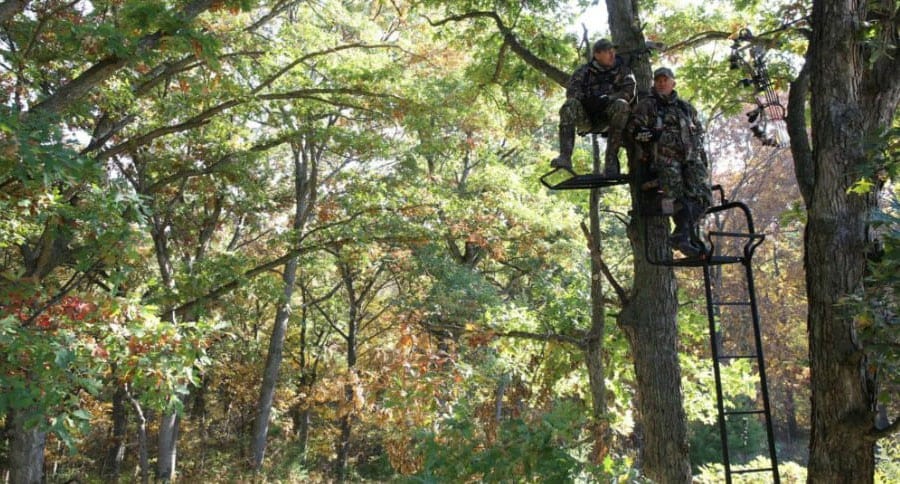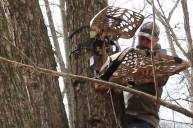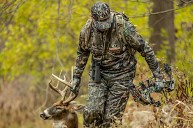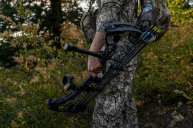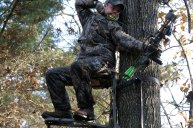If you're wondering where to put your stand this deer season, here are some options.
With hunting season upon us choosing the optimal location for a treestand this deer season can be hard, so we've outlined some options that'll help you narrow down the best place for your scenario. Similarly, a lot of this depends whether you're bowhunting or rifle hunting. We outline a few of both with a tilt towards bowhunting, as it often requires getting closer to mature bucks. Finally, these stand locations don't just apply to deer hunting. They apply to a lot of different types of game animals as well.
Bedding Areas
If you want to be aggressive, find the bedding areas. This requires a lot of preseason scouting, but if you want to know where big bucks are frequenting, you must also know where they bed. You're treestand placement is crucial in this scenario, and you need to have an idea of the wind direction. You'll want to place the treestand downwind of the of the bedding area, too, as bucks typically check the wind in their bed before they enter it.
Food Sources
This is applicable to both bowhunters and rifle hunters. Especially during the early and late parts of the season, bucks are easier to pattern on and off of food plots and agricultural fields. In the early season, they're still on their summer patterns, consuming as much protein as possible for their skeletal and antler growth. In the late season they're back on their patterns trying to preserve energy for the cold months, consuming as many carbohydrates as possible. However, food sources also include fruit-bearing trees or acorn and nut trees. You might not have access to a food plot or ag field, but deer love acorns and might be frequenting the local oak tree or orchard instead.
Field Edge
Likewise, field edges are good for both bowhunting and rifle hunting treestand locations. Hunters often place stands on field edges to observe deer movement. While it still could produce a deer harvest, most mature bucks won't show themselves until the evening unless it's the rut. This treestand placement is good for seeing doe groups and how bucks are traversing the surrounding areas. Occasionally, bucks will meander a field edge if the conditions are right. A tactic to employ is creating a mock scrape on a field edge. While a majority of mature bucks visit scrapes at night, it might be just enough to entice a big buck during legal shooting light of an evening hunt.
Natural Funnels
Understanding deer movement and the way whitetails utilize terrain features changed the way I hunt. Locate obstacles that the deer must circumnavigate. Place a stand where the deer are crossing through these funnels and be ready for an encounter. I wish I would have learned this earlier. It increases my confidence to see everything while hunting. I like big open areas, but if I learned this tactic earlier I think I would have killed more bucks and more deer in general sooner.
Early Successional Growth
This could also be considered under bedding areas, however, I'm referring to areas that don't contain any trees to place a stand. This will likely require a ground blind. Oftentimes, big trophy bucks hide out in early successional growth because a majority of hunters won't try to hunt it. There's no place to put a ladder stand, and there's no place to climb or place a hang-on stand. The only way to hunt is on the ground. This is risky, but once again, place your blind downwind of the area and intercept bucks checking wind.
At all times practice treestand safety this deer season. Wear a safety harness and give your loved ones peace of mind.
Like what you see here? Read more hunting articles by Nathan Unger at whitetailguruhunting.com. Nathan is also the host of the Whitetail Guru Hunting Podcast.
NEXT: 5 AFFORDABLE DEER STANDS THAT WON'T BREAK THE BANK THIS SUMMER
WATCH
https://rumble.com/embed/u7gve.v3v4j9/
